Although the advice—and the audience—you find at Muddy Colors transcends genre, it’s true that the core of us are involved in fantasy. As illustrators and art directors, we talk foremost about telling stories. Because of that, and from a lifetime of growing up on Tolkien and Herbert and Star Wars and Spiderman, we have all learned—either consciously or unconsciously—to speak the language of myth. That’s what we’re talking about when we say something is truly
epic. It’s what we feel when we can identify with the hero of a story. Myth is like the operating system of humanity, and if we, as artists, learn how to code, so to speak, it will bring about greater emotion and greater narration in all your work.
This has been much on my mind the past few months. Recently I’ve been rereading some authors that are very important to me, and have impacted a great deal of my philosophy as both an art director and as a person. These are books I’ve read and reread many times before, over years. Some of the books even have notes of mine from high school or college in them. But rereading them now, I’m making so many more connections, and I want to share some with you.
For those of you who already know a great deal about these books and their authors, please bear with me, I’ll be simplifying many of the concepts in the hope of greater understanding:
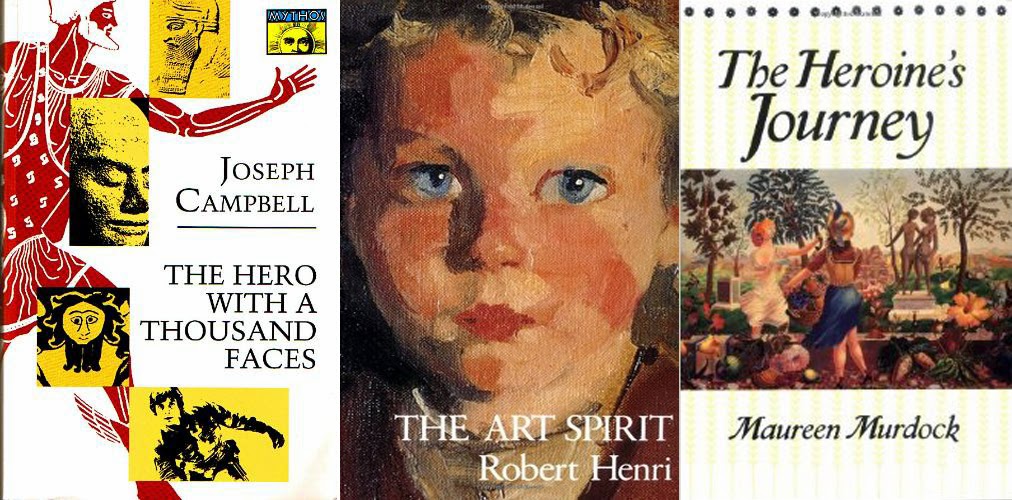 |
| Muddy Colors Book Club: Round 1… (No, there won’t be a quiz) |
First, there’s Joseph Campbell’s The Hero With a Thousand Faces. Joseph Campbell was a scholar of comparative religion, and he spent his life studying the amazing similarities between all the myths and religions and stories the human race has ever told. And there is much more similarity than difference. He takes Carl Jung‘s concept of archetypes—repeating characters like the Trickster, the Wise Old Man, the Hero, etc.—and finds that they appear in every myth, every religion. Jung’s concept of the Collective Unconscious should be familiar to every artist—the idea that humanity as a race shares a mass repository of knowledge and instinct that creative people can tap into—because that’s what we are so often touching when we create. Campbell takes these concepts and applies them directly to our most important stories, our stories about Heroes. It is widely known that George Lucas wrote Star Wars directly on the framework supplied by The Hero With a Thousand Faces, and that’s the reason Star Wars feels like myth, and touches us so deeply. You can look at every hero story, every movie, every comic, every book, and see the same pattern over and over again.
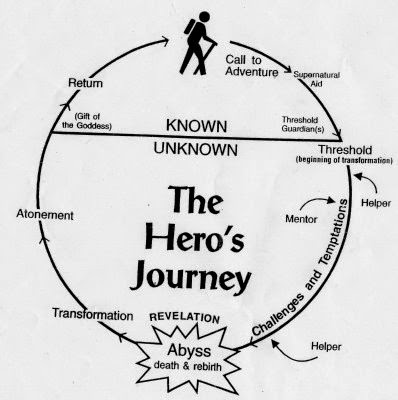 |
| The simplest version of the Hero’s Journey is: Separation — Initiation — Return |
So what’s Campbell’s definition of a hero? The quotable answer is “A hero is someone who has given his or her life to something bigger than oneself”— which is kind of a vague answer. However, if you read the book, he explains in depth. A hero is someone who breaks with society’s expectations, throws off the shackles of expected behavior, travels deep into the subconscious—both their own, and the collective unconscious of humankind—battles with the monsters of the deep, wins a boon or treasure or knowledge, then brings back that treasure to the society to enliven it again.
Sound a bit familiar to you artists yet?
Next I reread
The Art Spirit by Robert Henri. If you’ve been an artist for longer than five minutes, another artist has already told you to read this book. It’s a strange book,
more of a collection of notes and bits of speeches and letters than it is any kind of cohesive story or agenda. Robert Henri was a painter in the famous Ashcan style, but more importantly to this article, he taught painters in New York City in the early 1900s. It’s impossible to condense this book down for this post, it touches on so many conversations we have here over and over. Most recently I was reminded of his entire sections on juries and awards. I was also quoting his ideas about the worth of artists buying original art in a conversation about the
Every Day Original project. If you haven’t read it, go find yourself a copy. It’s absolutely worth every minute you spend reading it.
However, what called out to me, having just read Joseph Campbell, was Henri’s definition of an artist. He defines an artist as someone who rejects society’s constraints and priorities and lives his life as an experiment in how to live purposely and joyously, learning to see past what we think is there and what we think we feel, and get all the way down to what we really see and what is really there. He actually says the art the artist makes is a by-product of the journey, not the actual point of the journey. (Kind of similar to how Buddhism is just the path because you can’t give someone the instructions to enlightenment, all you can do is point in the general direction and they find their own way.) The art is a critical signpost left for both other artists and society as a whole to see and follow.
Sounds…heroic, doesn’t it?
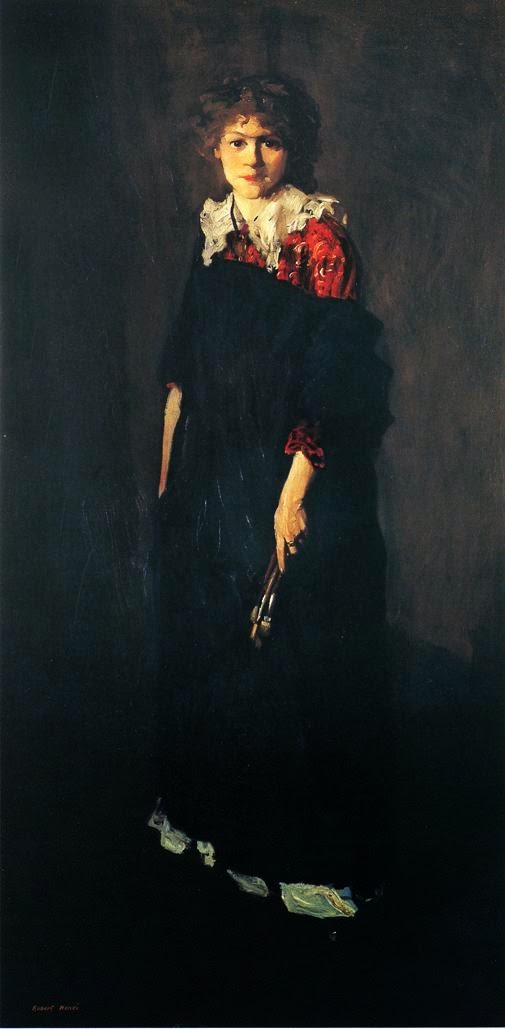 |
| Robert Henri, The Art Student, 1906 |
Henri goes further to straighten out the myth of the “Starving Artist” which was clearly as much of an trope in his time as it is in ours. He explains that artists are misunderstanding. It’s supposed to be the “Struggling Artist” — not “starving” because you can’t make enough money to eat, but “struggling” against the constant pull of society to relax, stop pushing, conform. Struggling to stay on the journey when family and friends and well-meaning patrons and juries (and art directors) try to get you to take it easy, do what’s popular and going to sell instead of focusing on what message you are driven to convey.
Sounds exactly like Campbell’s definition, don’t you think? Both the Hero and the Artist have the strength to break with society’s expectations because they have a journey to take within themselves. They dive deep into the unconscious and bring back a treasure, a message, a truth, that society needs before it can grow for the better.
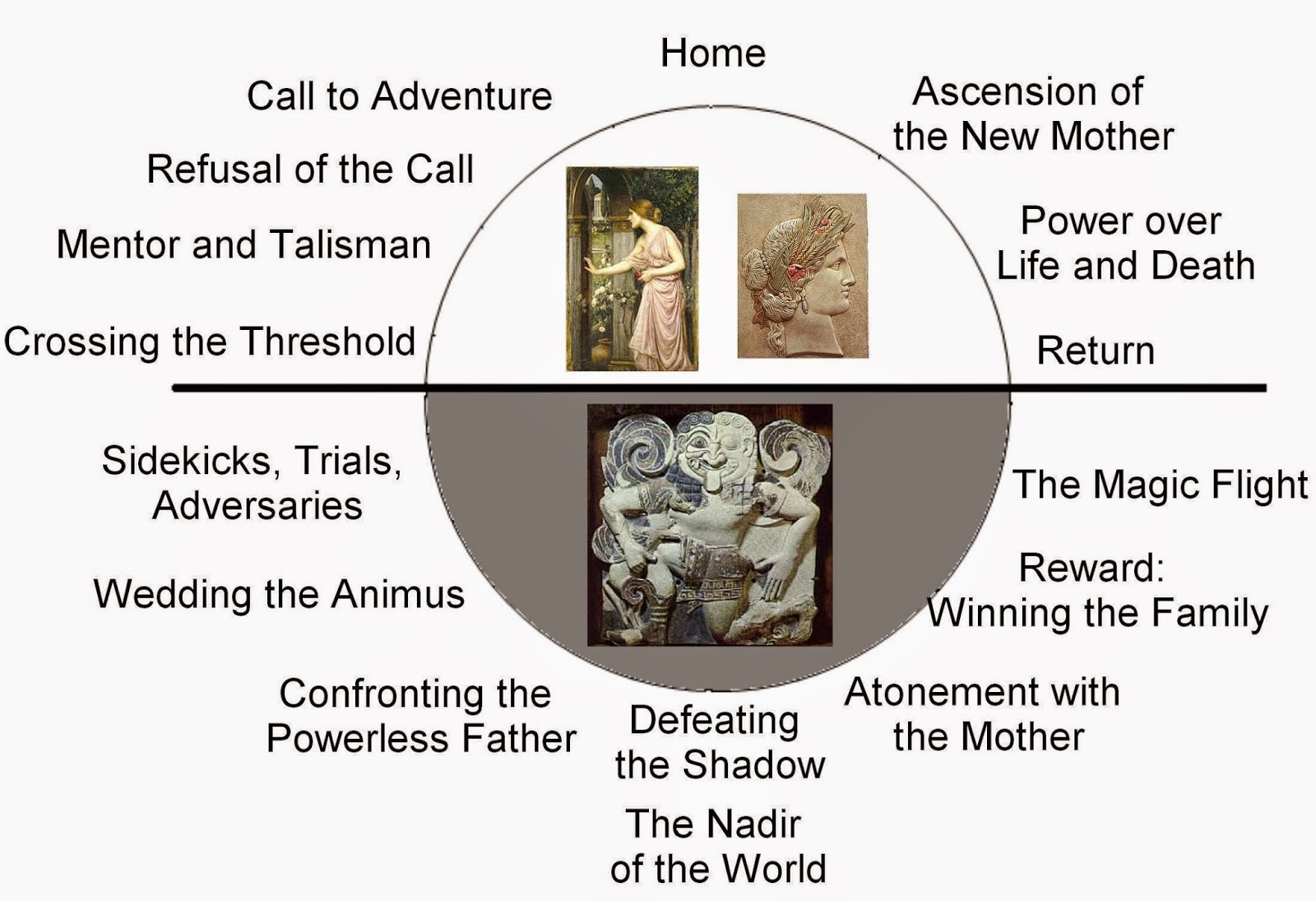 |
The Heroine’s Journey has a lot in common with the Hero’s, but is different in ways it’s
critical to know if you are creating or illustrating female characters. |
The third book is one I actually hadn’t read before, but works as a great counterpart to both of the other books. Although Campbell and Henri both mention women heroes and women artists, their books focus on the male experience. Campbell has had many female students, and some of them carried on his work and focused on the woman-as-hero. One is
Maureen Murdock, and she wrote a book called
The Heroine’s Journey. Although much of the journey is the same for both Hero and Heroine—the break with society, the descent into the subconscious, etc.—there are some very important distinctions that are important to highlight for artists of both genders.
First of all, if you are going to illustrate Heroes and Heroines it is going to help your art immensely to understand more deeply the mythic forces at play in the subconscious of your audience. You can better understand how to make work that slips past the Windows 97 of rational thought and speaks to people deep in their emotional MS-DOS. Although you can apply much of The Hero With a Thousand Faces to a depiction of a heroine, it would be much more effective to understand the differences and work those into your images of women in your work. That’s going to speak directly to the women in your audience in a way that sets you apart and above most other artists.
More importantly, I think the Heroine’s Journey speaks to artists of both genders. The main difference between the Hero’s Journey (where something external is conquered and a prize is retrieved) and the Heroine’s Journey (where an inner rift is healed and a prize is created by that healing) is quite fertile ground for artists. Although there are certainly external dragons to slay in an artist’s career, I think the bulk of the struggle is with yourself. Bringing the undisciplined and wildly creative (but unpredictable) aspects of an artist’s nature in accord with the need for discipline and hard work and earning a paycheck. The Heroine’s Journey addresses all that in a way that Campbell never touches.
So if you find yourself in a place where you feel a bit lost in your career, or you just want to affirm that you’re on the right path, definitely check out one (or all) of these books. And even if you have no doubts about your life as an artist (no doubts? who are you?) then they’re still definitely worthwhile reads to breathe life into your characters.
Meanwhile, some links:
The Hero With a Thousand Faces (
new) (
used)






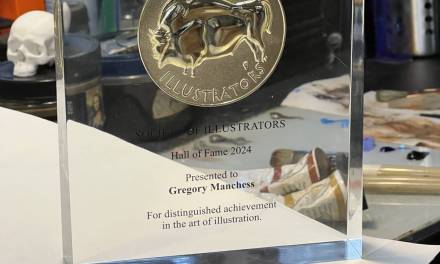

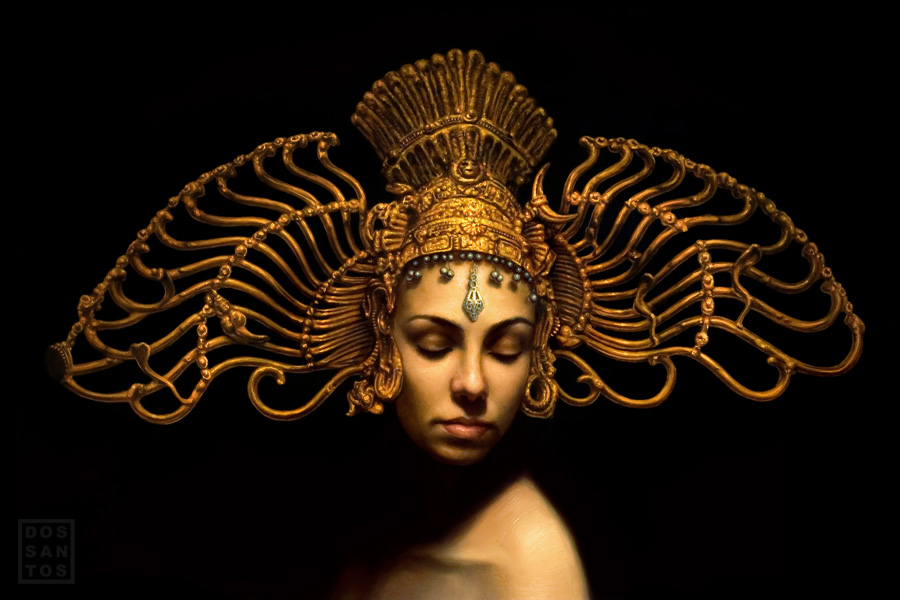
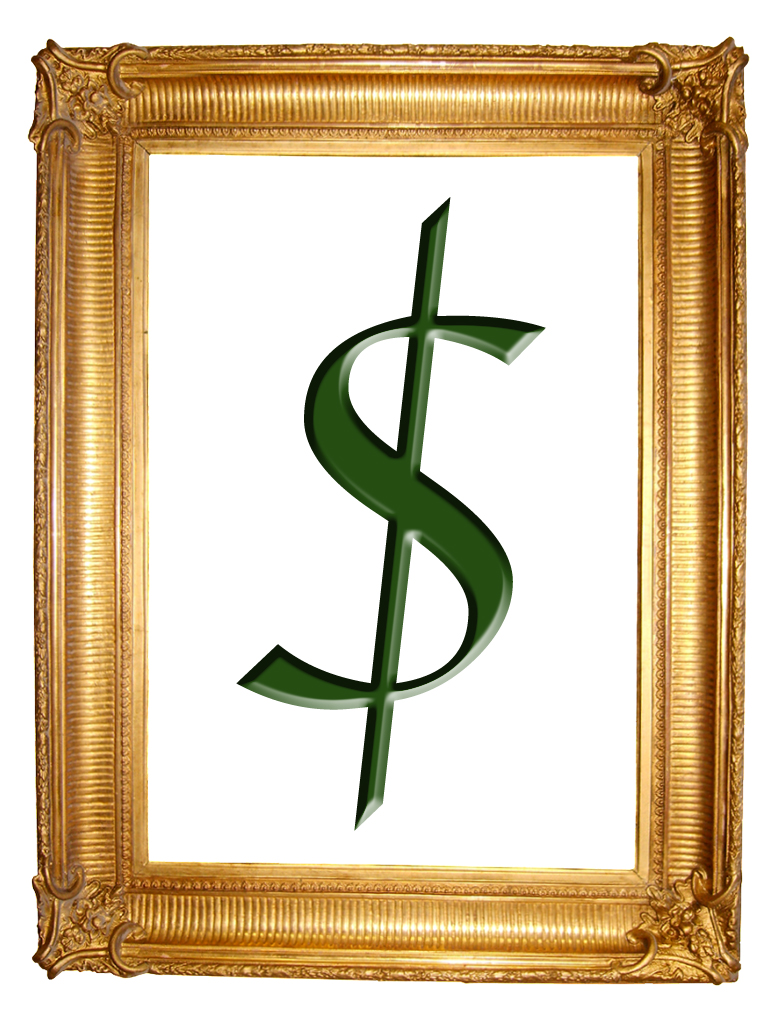
Great article Lauren. Robert Henri's book is a classic. I really like his concept of “art is a by-product”, insofar as the creative process is what it is all about, not necessarily the creation. However, creating visual art is typically very intentional and often methodically planned. Describing something made so deliberately a by-product is kind of a stretch.
I think you are bringing your own moral judgement to it that a by-product is somehow less worthy, and I don't think that's what he is saying at all (certainly not with the love he has when he talks about painting). Isn't happiness the byproduct of a well-lived life? You can say children are the by-product of (some) marriages. You can say all of Buddhism is the byproduct of one man's personal enlightenment…I take it to mean him saying if your goal is simply to make a good painting, you will, but it will be soulless if you do not have the life experience to enliven it.
Oh, I completely get what Henri is saying, and agree that art is a reflection of a state of being. The parts of the book that refer to that are some of my favorite passages! I'm just saying that calling the art produced a byproduct is a misnomer. Lauren, the examples you give, happiness etc, are indeed true byproducts… but they just happen naturally as a secondary result. Quite the opposite of the labors and focus an artist puts into a given piece, in many cases for the majority of their waking hours.
I totally see your point…but isn't his point that it's not SUPPOSED to be that way? that the art should flow more freely out of the artist's seeing, rather than being a perfectly plotted-out in advance thing? It's absolutely up for personal interpretation, of course…
I think it is in our nature to read things into other peoples' words and that's OK. I believe that Henri was talking about the making as a journey that should be fully experienced not just the shortest path to completion. If we take too many shortcuts in life we miss most of it. Focusing on the getting done instead of the going there. Of course there are different journeys. As an illustrator we most often need to take a faster more efficient path. But Henri was definitely no talking about illustration. And maybe that is one of those elusive things we try to find when defining the difference between art and illustration. Love those first two book Lauren, have yet to read the third. Thanks.
If you are interested in Campbell’s work, I’d like to point you to the non-profit Mythic Imagination Institute:
http://www.mythicimagination.org
Their mission is to “reunite people to the accumulated wisdom of humankind that lives in stories and mythology”. In 2004, in conjunction with the Mythic Journeys conference by MII, Charles Vess and Karen Shaffer curated an exhibit of mythic art called “Ancient Spirit, Modern Voice” that included works by artists known to Muddy Colors readers like Alan Lee, Brian & Wendy Froud, Greg Spalenka, and many others you might not be aware of. Amazon has some copies available: http://www.amazon.com/Ancient-Spirit-Modern-editor-Shaffer/dp/0965776921 for those interested in picking it up. Confession: I did design and layout work on it, so it gets my endorsement.